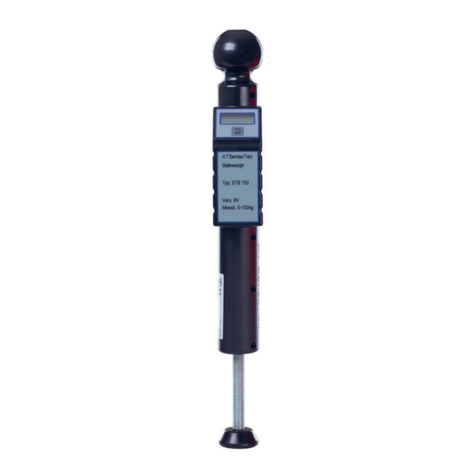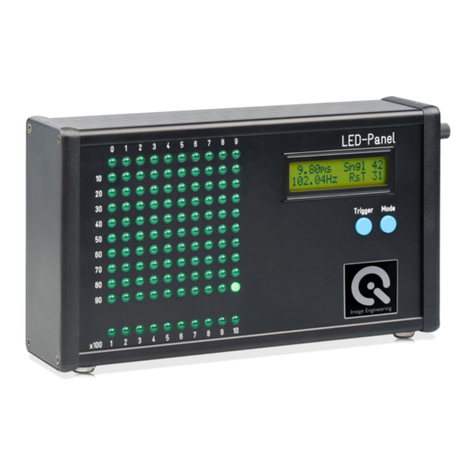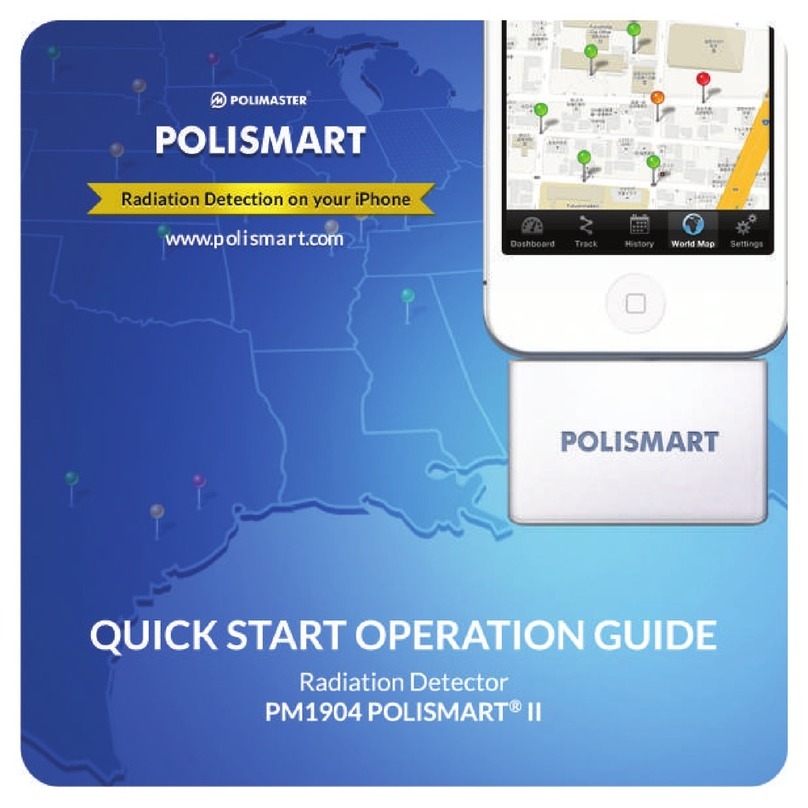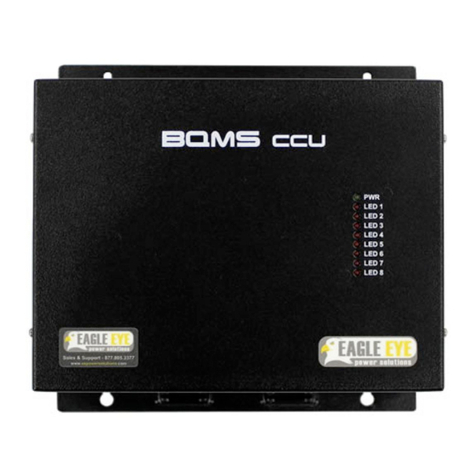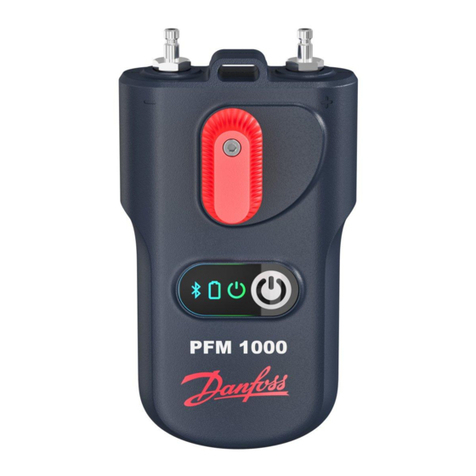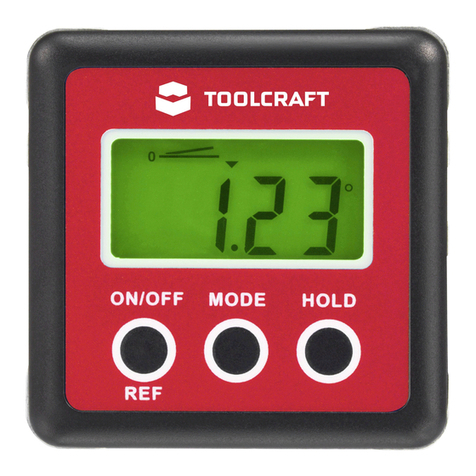Architect i2000SR User manual

Service Manual i2000SR interface module
625798100.APS.5.doc Page 1 of 212
i2000SR IM
Service Manual for the i2000SR Interface Module
Document name: 625798100.APS.5.doc
Last revised(ISO 8601): 2007-10-31

i2000SR interface module Service Manual
Page 2 of 212 625798100.APS.5.doc
SUMMARY
Overview ..........................................................4
Identification Data .......................................................................... 4
Warnings Concerning Safety........................................................... 4
Laser Safety .................................................................................... 5
Description .......................................................7
i2000SR Interface Module ............................................................... 7
Tube Lanes ................................................................................................................. 9
Input and Output Areas ............................................................................................ 10
Path of the APS Carriers ........................................................................................... 10
Path of the i2000SR IM Carriers................................................................................ 11
Input and Output Areas ............................................................................................ 11
Process Controls ....................................................................................................... 12
Stop Gates ................................................................................................................ 12
Brief description of the stop gate devices................................................................ 13
Off-line Carriers ........................................................................................................ 15
On-Line Carriers........................................................................................................ 15
Diverters Description................................................................................................ 17
IM Antenna and Optical Sensors............................................................................... 19
i2000SR Instrument Indicator Light (IM pole lamps) functioning .. 20
RED LAMP ON: Error or Initializing............................................................................ 20
RED LAMP Blinking: SCC CLI communication error................................................... 20
YELLOW LAMP Blinking: ............................................................................................ 20
GREEN LAMP ON: Running, Paused or Pausing ........................................................ 21
Modes of Operation....................................................................... 21
i2000SR IM Pneumatics Components............................................ 23
i2000SR IM Electrical Components................................................ 25
MASTER CAN Board Description.................................................... 26
MASTER CAN Board Segment Indicator .................................................................... 28
SLAVE 0 CAN Board Description.................................................... 28
SLAVE 0 CAN Board Segment Indicator.................................................................... 29
SLAVE 1 CAN Board Description.................................................... 29
SLAVE 1 CAN Board Segment Indicator.................................................................... 31
Electrical Panel Connectors........................................................... 32
i2000SR IM Electrical Box startup ................................................. 34
Starting i2000SR IM in APS Mode ............................................................................. 35
Starting i2000SR IM in Standalone Mode ................................................................. 36
i2000SR IM Track Initialization ...................................................... 37
Rebuilding queues .................................................................................................... 38
Standalone mode initializing......................................................... 38
APS mode initializing..................................................................... 38
i2000SR IM exercise mode............................................................ 38
Instructions for Assembly ................................40
i2000SR IM Parts Shipped ............................................................. 40
Parts Shipped for a New Installation......................................................................... 41
Parts Shipped for a Retrofit Installation.................................................................... 41
The 21 i2000SR IM Off-Line Carriers ........................................................................ 41
Assembly Procedure ..................................................................... 42
Prerequisite .............................................................................................................. 42
Installation of the Instrument Indicator Light (pole lamps) ...................................... 42
Installation of the i2000SR IM ....................................................... 43
Pneumatic Connections ................................................................ 49
Initial i2000SR Support Procedure ................................................ 50

Service Manual i2000SR interface module
625798100.APS.5.doc Page 3 of 212
Electrical Connections................................................................... 53
IM Track Interface Cable Connections.......................................................................54
IM Electrical Box Cable Connections .........................................................................54
i2000SR Ground Wire Installation .............................................................................56
AC Power connections ...............................................................................................57
i2000SR IM LUI Panel Installation Procedure.............................................................58
i2000SR / i2000SR IM Alignment Procedure..............................................................60
i2000SR IM Horizontal Positioning Check ..................................................................65
i2000SR IM Vertical Positioning Check ......................................................................66
Alignment of routine and STAT sampling probes, gates and antennae ....................68
Install the Gap Filler ..................................................................................................68
Install 7L46-01 Off-line carriers.................................................................................70
Initialize i2000SR IM ..................................................................................................71
Verify Config Wizard i2000SR Setting .......................................................................73
Modify Config Wizard for i2000SR.............................................................................73
Modify Instrument Queue for instrument following i2000SR ....................................76
Modify Instrument Setup.INI file................................................................................77
Exercise i2000SR IM ..................................................................................................78
Verify carriers movement from the APS Track to i2000SR IM ...................................80
Complete installation of i2000SR LAS .......................................................................82
Retrofit of the I/O module pneumatic panel and circuit ................ 83
IOM Pneumatic Panel Differences ................................................. 86
Replacement Procedures................................. 88
Replacement of i2000SR IM .......................................................... 88
Replacement of i2000SR IM belts ............................................... 100
Replacement of Light Pole Lamp................................................. 111
Replacement of belts motor........................................................ 115
Replacement of motor belt group ............................................... 120
Replacement of disk motor ......................................................... 126
Replacement of belts 1 & 2 drive group...................................... 132
Replacement of belts 1 & 2 idler pulleys groups......................... 137
Replacement of belts 3 & 4 drive group...................................... 141
Replacement of belts 3 & 4 idler pulleys groups......................... 145
Replacement of i2000SR IM antennas ........................................ 149
Replacement of belt disk ............................................................ 154
Replacement of the big belt disk ................................................ 159
Replacement of the Carrier Spinning Group ............................... 164
Auxiliary Procedures ..................................... 170
Alignment of barcode reader ...................................................... 170
Alignment of routine and STAT sampling gates .......................... 176
Sample and STAT Antennae alignment verification procedure ... 182
Antennas test procedure............................................................. 187
Verification of belt tensioning ..................................................... 191
Verification of Carrier Routing..................................................... 194
Tag Reader CAN BUS Board Firmware Installation...................... 198
Preventive Maintenance Procedures .............. 203
Lubrication of gears .................................................................... 203
Spare Parts List ............................................ 208
i2000SR IM part list..................................................................... 208

i2000SR interface module Service Manual
Page 4 of 212 625798100.APS.5.doc
Overview
Identification Data
Module name: i2000SR Interface Module (i2000SR IM)
Group Drawing no.: 625.100.00X
Pneumatic layout: 625.107.00X
Electrical layout: 625.800.00X
Warnings Concerning Safety
WARNING: Potential Biohazard
Identifies an activity or area where potentially infectious
material may be present. Refer to your applicable
laboratory procedures and to “Section 4 - Hazards and
Warnings” of the Accelerator Service Manual
WARNING: Electrical Shock Hazard
Field Service Engineer (FSE) may be exposed to electrical
shock hazards if engineering controls are not observed.
Turn off the power to the Workcell and disconnect the
electrical main before replacing fuses, working on motors,
switches, connectors, electric wires or other electrical
devices.
CAUTION: Lifting Hazard
Identifies an activity that may require lifting or moving a
heavy object. Obtain assistance when moving or using an
appropriate lifting device.
CAUTION: Moving Parts
The safety cover protection is not guaranteed if the
security devices are removed or bypassed. Use caution to
prevent injury caused by moving parts.

Service Manual i2000SR interface module
625798100.APS.5.doc Page 5 of 212
WARNING: Pinch Hazard
FSE may be exposed to pinch hazards while working on the
i2000SR IM. Be careful around moving parts while
performing diagnostic and maintenance operations.
WARNING: Probe Sharps Hazard
Follow safe sharp practices. Do not place your hand near
the probe while it is moving. Put the instrument through a
decontamination cycle and wipe the probe with a
disinfectant prior to touching or working near the probe.
Laser Safety
The laser classification scheme is used to describe the capability
of the laser or laser system to cause injury to personnel. The
higher the classification number, the greater the potential hazard.
The lasers on this workcell include Class 2 lasers.
During normal operation, the protective covers and access door
are to remain in place to prevent laser light exposure. The
protective covers and access door are to be removed only during
the servicing by qualified personnel. Do not remove the protective
cover laser warning labels. They must remain legible. The
protective housing label (label on instrument) is shown below. The
label consists of black lettering against a yellow background.
Do not remove, damage or obliterate any of the laser warning
labels. If any of the labels become damaged and/or illegible,
replace them.
LAB0033 is an illustration of the label recommended by Abbott
Safety to be placed on the i2000SR and i2000SR IM closeout
cover.
DANGER:
Class 2 Laser Radiation when open. Do not stare into beam.
Avoid eye exposure to laser light

i2000SR interface module Service Manual
Page 6 of 212 625798100.APS.5.doc
DANGER: Laser Hazard
Field Service Engineer (FSE) may be exposed to direct laser
emissions in the i2000SR IM area with the i2000SR cover
shields removed; be careful when performing diagnostics
and maintenance operations with i2000SR cover shields
removed.
The source of the laser beam is located in the barcode
reader device. Do not look directly into the aperture of the
emitted laser beam. The maximum radiant power at the
aperture of the laser barcode reader is 1 mW or less.

Service Manual i2000SR interface module
625798100.APS.5.doc Page 7 of 212
Description
This chapter contains a general description of the module and its
technical characteristics. An explanation of the principles of
operation is also provided.
i2000SR Interface Module
The purpose of the i2000SR Interface Module (IM) is to transport
samples to the ARCHITECT i2000SR instrument as a standalone
unit or interfaced with an Automated Processing System (APS). As
a standalone unit the i2000SR IM (
Figure 1
) is capable of
processing sample tubes without any functionality from the APS.
As an autonomous instrument it is equipped with its own power
supply, controller unit, and Laboratory Automated System (LAS)
connections.
Figure 1 i2000SR Interface Module
No. Description
1 i2000SR Interface Module with 4 tube lanes
2 Barcode reader
3 Instrument Indicator lamps
4 APS track with instrument interface module
5 i2000SR IM electrical box group
6 i2000SR IM pneumatic group

i2000SR interface module Service Manual
Page 8 of 212 625798100.APS.5.doc
NOTE:
Although the i2000SR IM can process samples independent
of the APS, the IM cannot be installed independent of the
APS.
The IM is controlled by a set of microcontrollers. The
microcontrollers are interfaced to the APS via the CAN bus and
are similar to the Tag Reader boards used to manage the
functions of the track.
The operator side contains a local user interface keypad, two
colored Input Status LEDs (green and yellow) for Routine and
Priority testing, and Instrument Indicator light (IM pole lamp)
with three lamps (red, yellow and green).
IM set-up/configuration/upgrade and device control operations
can be performed either by the APS software or by a laptop
connected to the APS computer hub via TCP-IP.

Service Manual i2000SR interface module
625798100.APS.5.doc Page 9 of 212
Tube Lanes
The i2000SR IM consist of four transport belts that are used to
create four tube lanes, each one dedicated to a specific task of
moving APS Workcell on-line and i2000SR IM specific off-line
carriers (See Figure 2 – Arrows show the belt spin directions):
Figure 2 – i2000SR IM top view
No. Description
1 Lane 1: The lane located closest to the i2000SR
instrument, transports carriers to sampling points for the
i2000SR sample and STAT pipettor.
2 Lane 2: Routes the carriers back to their original location
(the APS or the 4th lane of the IM).
3 Lane 3: Holds a queue of both off-line routine and off-line
priority carriers for the operator to load sample tubes.
4 Lane 4: The sample output area that can maintain a
queue of IM off-line carriers.
NOTE:
• The carriers used on the IM are a gray color and
are referred to as Off-line carriers.
• The off-line carriers cannot be used on the track
(on-line carriers).
• The system identifies the “gray” off-line carriers
using the RFID. The IM specific Off-line carriers have a
different range of RFIDs.

i2000SR interface module Service Manual
Page 10 of 212 625798100.APS.5.doc
Input and Output Areas
With reference to the
Figure 2
A Priority sample input area (queue of 6 off-line carriers)
B Routine sample input area (queue of 11 off-line carriers)
C Sample output area (queue of 4 off-line carriers)
D Entry Gate Queue (queue of 8 on-line carriers)
Path of the APS Carriers
Figure 3 – Carriers paths
The following is the path of the Carriers routed to the i2000SR IM
from the APS track
1. Carriers with sample for the i2000SR are diverted from
the main track to the i2000SR IM Entry Queue.
2. As the carriers enter the i2000SR IM track, the sample
tube barcode and RFID are read; the i2000SR IM sends
information to the APS where the link between the RFID and
sample SID is verified. If there is a match, the i2000SR IM sends
the i2000SR SCC the “prepare to sample” message. If the RFID
and SID do not match, a Carrier Mismatch error occurs.
3. After carriers are released from the barcode gate they are
routed to the i2000SR STAT pipetting location. The i2000SR IM
sends the SID to the i2000SR. The i2000SR performs a host query.
If the sample has a STAT test assay ordered, the i2000SR STAT
pipettor will aspirate the required volume for each assay to be
processed.
4. After the last STAT assay aspiration, the carrier is released
and is routed to the i2000SR routine sample pipettor. As the
carriers enter the sample pipettor aspiration point, the i2000SR
IM sends the SID to the i2000SR. The i2000SR performs a host
query and if the sample has a routine assay test ordered, the
i2000SR sample pipettor aspirates the required volume for each
assay to be processed. After the last aspiration, the carrier is
released and routed to the gate at the end of lane #2.
5. If the carrier is an On-line carrier, it is rerouted to the
main track.

Service Manual i2000SR interface module
625798100.APS.5.doc Page 11 of 212
Path of the i2000SR IM Carriers
The following is the path of the i2000SR IM carriers processed on
the IM.
1. During initialization, carriers are organized into two
queues (Routine and Priority) along Lane 3.
2. As soon as a sample tube is placed into the first carrier of
either the Priority or Routine position, it is routed from Lane 3 to
Lane 2. At the right end of Lane 2 is a gate and diverter that is
used to route the carrier to Lane 1.
3. At the entry to Lane 1, the tag reader reads the RFID and
the barcode scanner reads the label on the tube. The i2000SR IM
links the RFID and the scanned SID. The i2000SR IM sends the
i2000SR SCC the “prepare to sample” message.
4. After carriers are released from the barcode gate they are
routed to the i2000SR STAT pipetting location. The i2000SR IM
sends the i2000SR the SID. The i2000SR performs a host query
and, if the sample has a STAT test assay, the i2000SR STAT
pipettor will aspirate the required volume for each assay to be
processed.
5. After the last aspiration of the STAT assay, the carrier is
released and routed to the i2000SR routine sample pipettor. As
the carriers enter the sample pipettor aspiration point, the
i2000SR IM sends the SID to the i2000SR. The i2000SR performs
a host query and if the sample has a routine assay test ordered,
the i2000SR sample pipettor aspirates the required volume for
each assay to be processed. After the last aspiration, the carrier is
released and routed to the gate at the end of Lane #2.
6. The carrier RFID is read. As the carrier is from the IM, the
carrier is rerouted to Lane 4.
7. Lane 4 is used to manage a queue to re-supply off-line
carriers to the Routine and Priority queues on Lane 3.
Input and Output Areas
The IM offers three areas for manual operation with a total of 21
available carriers arranged in the following order after IM
initialization:
• Priority sample input area with 6 Priority Carriers (A).
• Routine sample input area with 11 Manual Carriers (B).
• Sample output area with 4 Output Carriers (C)
The IM carriers, identified as Off-line Carriers, are gray in color
differentiating them from the black ones used on the Workcell.
The Off-line carriers have different RFID tags than those on the
Workcell. The IM reads the RFID and ensures that the Off-line
carriers are never routed into the Workcell.

i2000SR interface module Service Manual
Page 12 of 212 625798100.APS.5.doc
During the APS operational mode, Workcell carriers identified as
On-line Carriers can be processed along with the Off-line
carriers. As the IM Off-line and Workcell On-line carriers have
different RFID tags the IM routes all Off-line carriers to Lane 4
and the On-line carriers back to the Workcell, after processing.
NOTE:
If an IM Off-line carrier enters the APS track, the APS
identifies the off-line carrier at the next RFID gate tag
reader position and the APS carrier movement stops.
Process Controls
Nine RFID antennae are used to identify the carriers. Seven are
on the IM module and two are on the track instrument interface.
Three optical sensors are used to sense the presence of tubes.
One is located at the routine sample input area (G7b), another at
the priority sample input area (G8) and the third at the sample
output (G6). (See Figure 4 and Figure 6)
Two additional optical detectors located near disk D3 are used to
verify that On-line carriers are routed back to the APS Workcell
and Off-line carriers are routed to Lane 4.
Stop Gates
The IM Stop Gates and Diverters are pneumatic devices controlled
by the firmware (F/W) in the Master and Slave Tag Reader boards
located in the IM electrical box. These devices control carrier
traffic on IM lanes and the associated instrument interface.
There are three different types of stop gates:
Type 1 Gate – avoids interference with other carriers that are
arriving on the next lane.
Type 2 Gate – waits for an optical sensor to detect either the
insertion or removal of a tube.
Type 3 Gate – waits for the carrier to be identified using the RFID
tag reader.

Service Manual i2000SR interface module
625798100.APS.5.doc Page 13 of 212
Figure 4 – Stop gates (G#) and diverters (D#)
Brief description of the stop gate devices
Refer to
Figure 4
and
Figure 9
.
Gate 0 – (G0) is located on the APS Track and is operated by
electro valve EV1. This Type 3 gate operates when the carrier
moving along the APS main track is either diverted into the
i2000SR IM or continues along the APS track. If the carrier is
diverted, Gate 0 and the standard track diverter (D0) activate to
route the carrier to the IM. The diverter (D0) is operated by
electro valve EV2.
Gate 0 is also used to maintain the number of carriers in the
queue of the i2000SR IM instrument interface.
NOTE:
The number of carriers queued at the Instrument Gate (G0)
is set by the value in the Instrument Gate parameter of the
Config Wizard Track Layout. The value of the standard
instrument interface queue is ten (10).
Gate 1 – (G1) is the Entry gate and is located on the Pit Stop lane
of the APS track and is operated by electro valve EV3. This Type 1
gate operates when the i2000SR IM is used with the APS. The
gate is normally closed and will only open to allow carriers from
the track to enter Lane 1 when there is no possibility that it would
interfere with an Off-line carrier from the IM lane 3.
NOTE:
The number of carriers queued at the Entry Gate (G1) is set
by the value in the Return/Entry Gate parameter of the
Config Wizard Track Layout screen. Typically the value is
set to eight (8) as that is the number of carriers that can
physically be placed in the area. (Refer to figure 1)

i2000SR interface module Service Manual
Page 14 of 212 625798100.APS.5.doc
Gate 2 – is a set of three (Barcode) BCR Type 3 gate devices (G2
Æa, b, and c) located on the i2000SR IM Lane 1. The set stops
and reads the carrier RFID tag and rotates the carrier to allow the
Barcode reader to scan and identify the label on the tube. For On-
line carriers from the APS track, the link between the SID and
RFID is verified by the APS. Samples that are manually inserted
into Off-line carriers at either a Routine or Priority location are
scanned and a link is created between the RFID and SID.
G2a Electro valve EV5 controls the gate that stops the carrier
at the barcode reader.
G2b Electro valve EV6 controls the roller that drops on the
carrier that causes the carrier to spin.
G2c Electro valve EV7 controls the stop gate before the spin
area. To prevent drag on the spinning carrier, the G2c gate stops
the second carrier before the spin area.
NOTE:
Since the off-line carriers do not leave the i2000SR IM,
their SID is communicated via the Master Tag Reader
board.
Gate 3 – (G3) is the STAT Sampling Gate located on Lane 1 and is
operated by electro valve EV8. This Type 3 gate stops the carrier
for tube sampling in front of the i2000SR STAT sampling position.
Tube identification is obtained by reading the RFID. The i2000SR
IM Mater Tag Reader board sends the corresponding SID to the
i2000SR. The i2000SR performs a host query to determine the
test ordered. Prior to each aspiration, the RFID is read.
NOTE:
Should the RFID change before the carrier is released, a
sample presentation error is generated and in standalone
the i2000SR system run is stopped
Gate 4 – (G4) is the Routine Sampling Gate located on Lane 1 and
is operated by electro valve EV9. This Type 3 gate stops the
carrier in front of the i2000SR routine sampling position. Tube
identification is obtained reading the RFID. The i2000SR IM sends
the corresponding SID to the i2000SR. The i2000SR performs a
host query to determine the test ordered. Prior to each aspiration,
the RFID is read.
NOTE:
Should the RFID change before the carrier is released, a
sample presentation error is generated and in standalone
the i2000SR system run is stopped
Gate 5 – (G5) is located on Lane 2 and is operated by electro
valve EV11. This Type 1 gate stops the carrier on Lane 2 to avoid

Service Manual i2000SR interface module
625798100.APS.5.doc Page 15 of 212
a collision with a carrier arriving from Lane 3. Lane 3 carriers
always have precedence over those traveling on Lane 2.
At this stop gate, a Tag Reader identifies the carrier and the IM
determines which of the following three scenarios is appropriate:
Off-line Carriers
1. If the stopped Off-line carrier was manually loaded, the
sample just introduced at either the routine or priority sample
input areas, the D2 Diverters (Lane 2/1 and Lane 3/1) are
activated and allows the carrier to travel on the small disk and
into Lane 1. The D2 diverters are operated by electro valve EV4.
2. If the stopped carrier is an Off-line type and contains a
sample tube that has been already sampled, the D2 and D3
diverters are set to route the carrier around the large disk and
return to Lane 4 (Output Lane). The D3 diverter is operated by
electro valve EV12.
On-Line Carriers
3. If the stopped carrier is an On-line carrier from the APS
Workcell, it must be returned to the track. In this case, the
diverters D2 (Lane 2/1 and Lane 3/1) and D3 activate and allow
the carrier to go back to the APS Track.
Gate 6 – (G6) – is an Output Gate located on Lane 4 and is
operated by electro valve EV13. This Type 2 gate is controlled by
an optical tube sensor that checks for the removal of the tube
from the carrier. The empty carrier is released to Lane 3 (input
area) and to Gate 7b. Gate 6 manages the release of empty
carriers required to re-supply the carriers for the routine (G7b)
and priority (G8) gates. Gate 7b and the diverter D1 manage the
queue of carriers in the priority sample area. If there is a shortage
of carriers, the priority sample area will have the precedence.
NOTE:
For a detailed description of the queue building sequence,
refer to the Initialization Sequence section.
Gate 7b (G7b) – is the Routine Input Gate located on Lane 3 and
is operated by electro valve EV14. This Type 2 gate is located at
Routine Manual Input position and controls the routing of
manually entered routine tubes and is controlled by an optical
tube sensor located at the entry position. The sensor is used to
verify presence of a tube in the carrier. In this case, Gate 5
operates to stop any carriers moving on Lane 2 and allows the
new carrier to enter by opening the diverter Gate D1, which
routes the carrier from Lane 3 to Lane 2. The D1 diverter is
operated by electro valve EV15.
The IM controls a Green/Yellow LED associated with this gate.
When the LED is yellow, the carrier at the gate is routed to the
Priority Input area (G8). Tubes must not be manually inserted

i2000SR interface module Service Manual
Page 16 of 212 625798100.APS.5.doc
into an empty carrier at this time. When the LED is green, tubes
can be manually loaded into the carrier located at this gate.
Gate 7a – (G7a) is on Lane 2 and is operated by electro valve
EV10. This Type 1 gate stops the carrier on Lane 2 to avoid a
collision with a carrier that is being introduced from the Lane 3
Routine Manual input area gate (G7b). The Routine Manual Input
samples from Lane 3 have precedence over carriers running on
Lane 2. The opening of the diverter D1 (Lane 3/2 Diverter) drives
the closing of Gate 7a and prevents collisions as a new tube
carrier enters from the manual input gate. (See Gate 7b).
Gate 8 (G8) – is the Priority Input Gate located on Lane 3 and is
operated by electro valve EV16. This Type 2 gate is located at the
Priority Manual Input position and is controlled by an optical tube
sensor located at the entry position. The sensor is used to verify
the presence of a tube in the carrier. The Priority Input position is
used to insert priority samples, calibrators and controls. The
carrier will be introduced onto the large disk and routed via the
pair of D2 diverters to Lane 1. The D2 diverters are the Lane 3/1
and Lane 2/1 Diverters and are operated by electro valve EV4.
The Lane 3/1 Diverter is positioned to prevent the carrier from
being routed to the Main APS track. The Lane 2/1 Diverter opens
to allow the carrier to enter Lane 1.
NOTE:
When introducing calibrators and other tubes that need to
be processed according to a specific order, they must be
loaded in order at the Priority Input queue. The last
calibrator to be processed is placed into the appropriate
carrier to the left of the entry point. For a six (6)-point
calibration, the last calibrator “F” is loaded into sixth
carrier to the left. The remaining calibrators are loaded in
sequence as illustrated below. The first calibrator to be
aspirated is “A” and is loaded at the Priority Entry point.
(See
Figure 5
) When the first tube is detected the entire
set of tubes will move in to be processed.
Figure 5 – Calibrator Load (Six point)
Gate 9 (G9) – This Type 1 gate is located on the APS main track
and is operated by electro valve EV17. An optical sensor is
positioned to detect that the On-line carrier was routed from the
large disk and was returned to the main track. The optical carrier

Service Manual i2000SR interface module
625798100.APS.5.doc Page 17 of 212
detect sensor that controls Gate 9 is on the main track at the
output of the large disk. Gate 9 is activated to stop carriers on the
Workcell Main Track and prevent collision with On-line carriers
leaving the IM.
On-line carriers released by G5 are routed around the large disk
to the Main track by opening the D2a (Lane 3/1) and closing the
D3 (Lane 4/Track) diverters. As the carrier passes the D3 diverter,
it is detected by the optical carrier detector and gate G9 is closed
to prevent a collision.
Diverters Description
Diverter Gates (D0-D1-D2a-D2b-D3) – These gates are used to
route a carrier into a different lane. The IM has five Diverter
Gates named D0, D1, D2a, D2b and D3. The diverters D1, D2a,
D2b and D3 are unique to i2000SR IM and have a different design
than those used on the main track. They are driven by the F/W
and used to control the routing carriers to the final destination.
Below is a description of each diverter and its function in
association with a gate.
D0 – Standard Track Diverter – is located at Gate G0 and is
activated by EV2 to divert tubes from the main track that are to
be processed by the i2000SR. The carriers bypass the i2000SR as
the diverter is normally in the open position.
Diverter
Control
Description
Reference
D0 EV2
Main track
IM entry
diverter
D1 – Lane 3/2 Diverter – is located at Gate G7b and is activated by
EV15 and has two functions 1) In the inactivated state, carriers
with sample tubes are released from Routine Input Gate G7b
where they are diverted from Lane 3 to Lane 2. 2) When Priority
Carriers are used, D1 is activated to allow carriers to continue to
move along Lane 3 to the Priority Input gate queue. The carriers
are diverted to Lane 2 as the diverter is normally open.

i2000SR interface module Service Manual
Page 18 of 212 625798100.APS.5.doc
Diverter Control
Description
Reference
D1 EV15
Lane 3/2
Diverter
D2b – Lane 3/1 Diverter – is located in the area of the gate G8 and
the large disk. It is controlled by EV4 and is activated to route
carriers from Lane 3 to Lane 1 via the opening created by D2a.
The diverter is normally retracted to allow carriers to travel
around the large disk.
Diverter Control
Description
Reference
D2b EV4
CYL1
Lane 3/1
Diverter
D2a – Lane 2/1 Diverter – is in the area of the gate G8 and the
large disk. It is controlled by EV4 and opens a path between Lane
2 and Lane 1. When closed, it prevents carriers from entering
Lane 1. When opened with the activation D2b diverter, it allows a
carrier from Lane 3 to be directed in to Lane 1
Diverter Control
Description
Reference
D2a EV4
CYL2
Lane 2/1
Diverter

Service Manual i2000SR interface module
625798100.APS.5.doc Page 19 of 212
D3 – Lane 4/Track Diverter – is in the area of the large disk. It is
controlled by EV12 and is activated to block carriers traveling on
the large disk from entering Lane 4. Carriers are then routed to
the Main Track. The diverter is normally retracted and allows
carriers to travel around the large disk.
Diverter
Control
Description
Reference
D3 EV12
Lane
4/Track
Diverter
IM Antenna and Optical Sensors
The i2000SR IM uses RFID Antenna and optical sensors to detect
the presence of a carrier and/or sample tube. These devices are
controlled by the F/W in the Master/Slave board located in the IM
electrical box.
An antenna is located at each of the nine gates and is used to
detect the RFID of the carrier located at the associated gate
location.
There are three tube sensors that are used to detect the presence
of a tube in a carrier. When a tube is placed into the first carrier
of a routine (G7b) or priority (G8) input location, it is detected by
the associated tube sensor. As the tube is routed to the Exit Gate
(G6), the tube sensor at that location is used to ensure that the
carrier does not contain a tube before it is routed to a tube input
queue.
The routine (G7b) and priority (G8) inputs have green and yellow
LEDs used to notify the user of the status of the carrier located at
the gate. A green LED illuminates to indicate the carrier is ready
for a tube to be inserted. A blinking yellow LED indicates that the
carrier is scheduled to move and a steady yellow LED illuminates
to indicate a moving carrier.
If the carrier on the disk is an On-line carrier, an optical sensor is
located on the main track near D3 to detect that the large disk to
the main track properly routs the carrier. The sensor is also used
to activate the main track gate (G9) to prevent a collision.
A second carrier sensor is located at the large disk near D2b to
detect that the Off-line carrier is properly routed to lane 4.

i2000SR interface module Service Manual
Page 20 of 212 625798100.APS.5.doc
Figure 6 – Optical sensors and antennas
i2000SR Instrument Indicator Light (IM pole lamps) functioning
The i2000SR Instrument Indicator Light is a pole attached to the
track with three colored lamps that are used as an interface
device to communicate to the operator the status i200SR IM. (See
Figure 1
)
RED LAMP ON: Error or Initializing
The red lamp illuminates to indicate that either the IM and/or
analyzer are either not fully initialized or an error condition
requiring operator attention has occurred.
RED LAMP Blinking: SCC CLI communication error
A blinking red lamp indicates that the i2000SR System Control
Center (SCC) is not initialized, or CLI communication was not
established.
The red lamp will remain blinking until the SCC is in the Snapshot
screen, and the IM has been reset and communication has been
established via the CLI port.
YELLOW LAMP ON: Exercise mode
The yellow lamp is illuminated to indicate the system in exercise
mode. Exercise mode is used to carrier movement operations and
is described in the Modes of Operation.
YELLOW LAMP Blinking:
While in Standalone mode, a blinking yellow lamp is used to
inform the operator of a sample presentation error. To prevent
erroneous results, the IM via the CLI port will issue the i2000SR
analyzer a Stop command.
Table of contents
Popular Measuring Instrument manuals by other brands
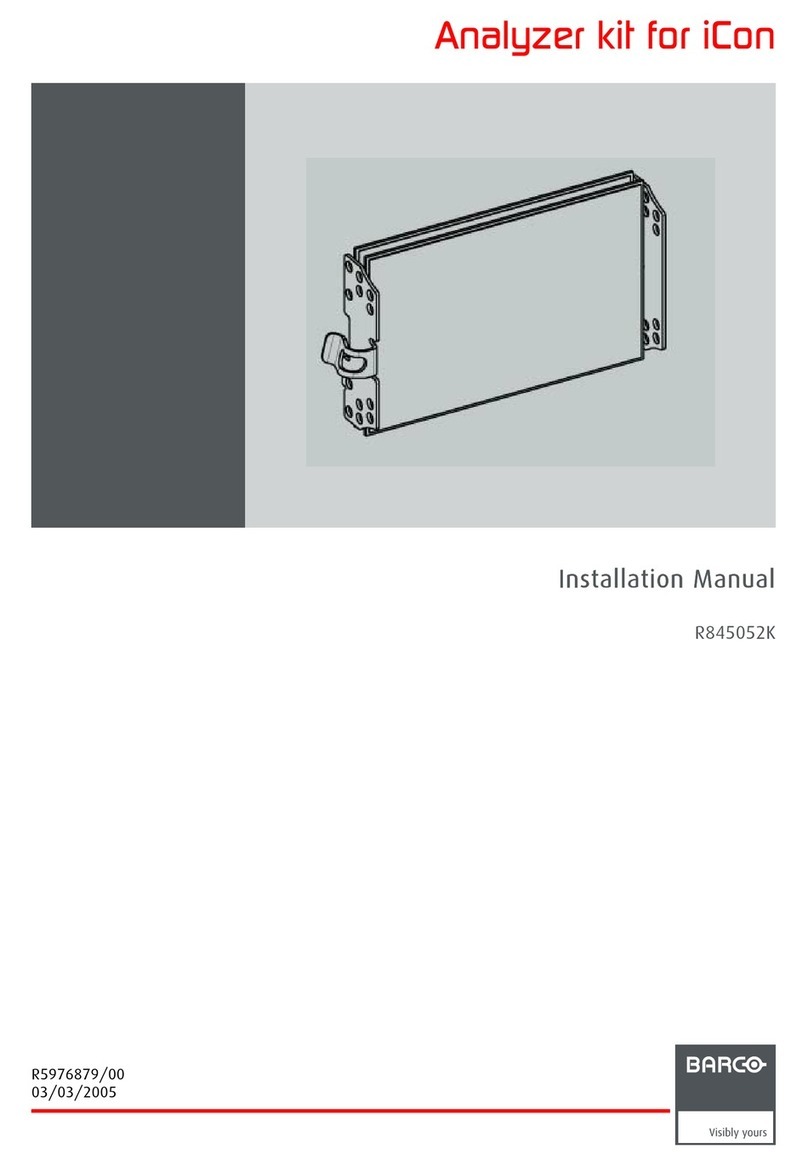
Barco
Barco R845052K installation manual

Endress+Hauser
Endress+Hauser StamoLys CA 71 CU operating instructions
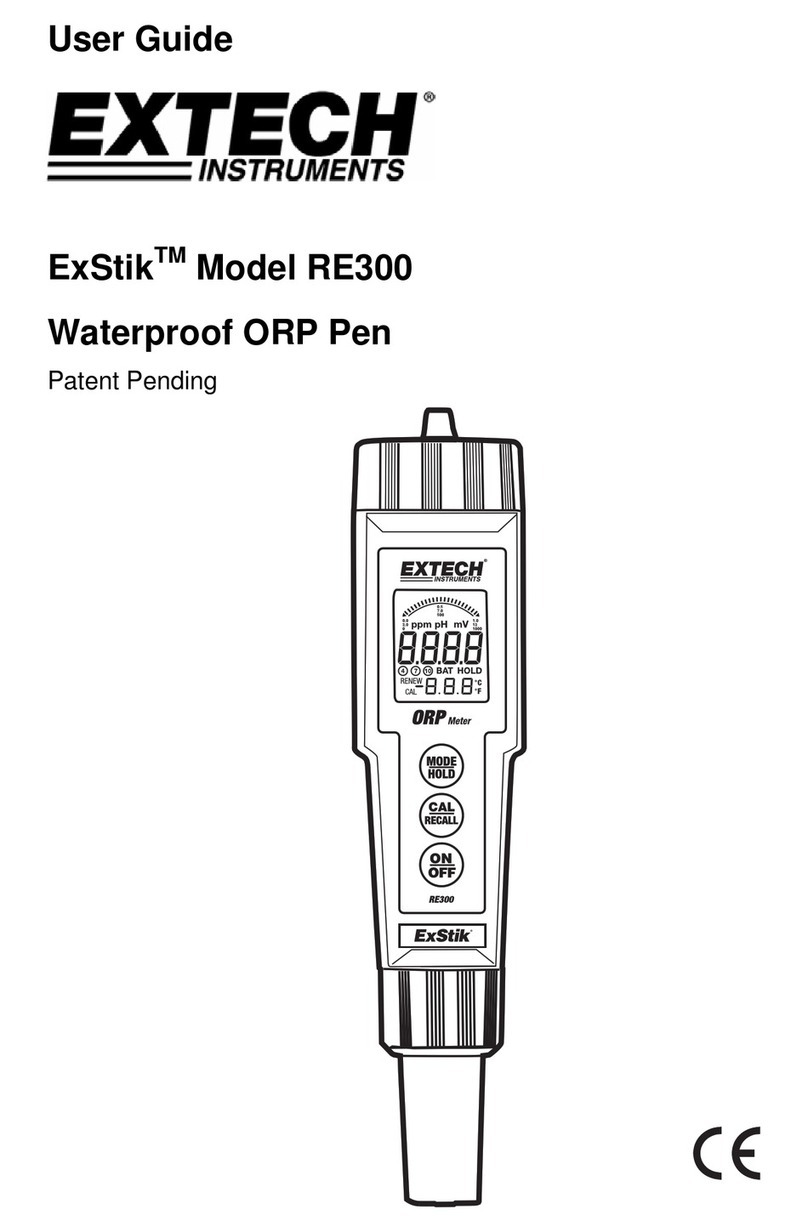
Extech Instruments
Extech Instruments ExStik RE300 user guide
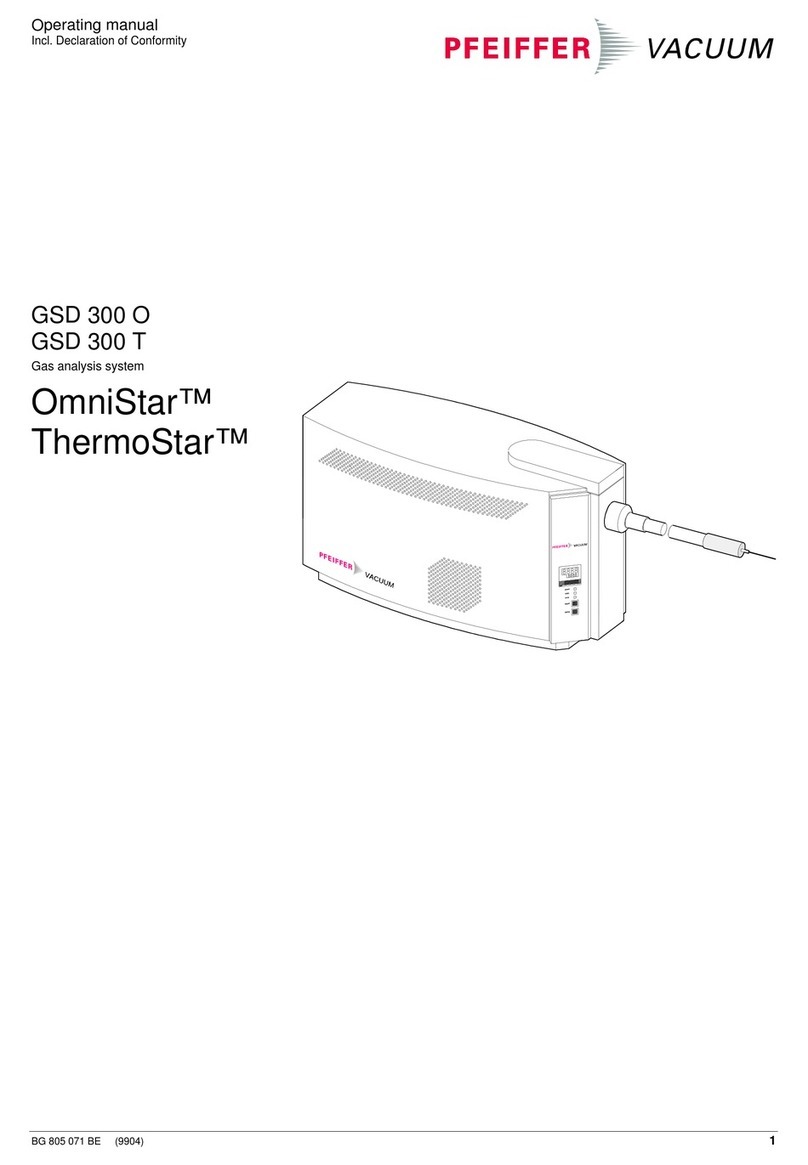
Pfeiffer Vacuum
Pfeiffer Vacuum OmniStar GSD 300 O1 operating manual
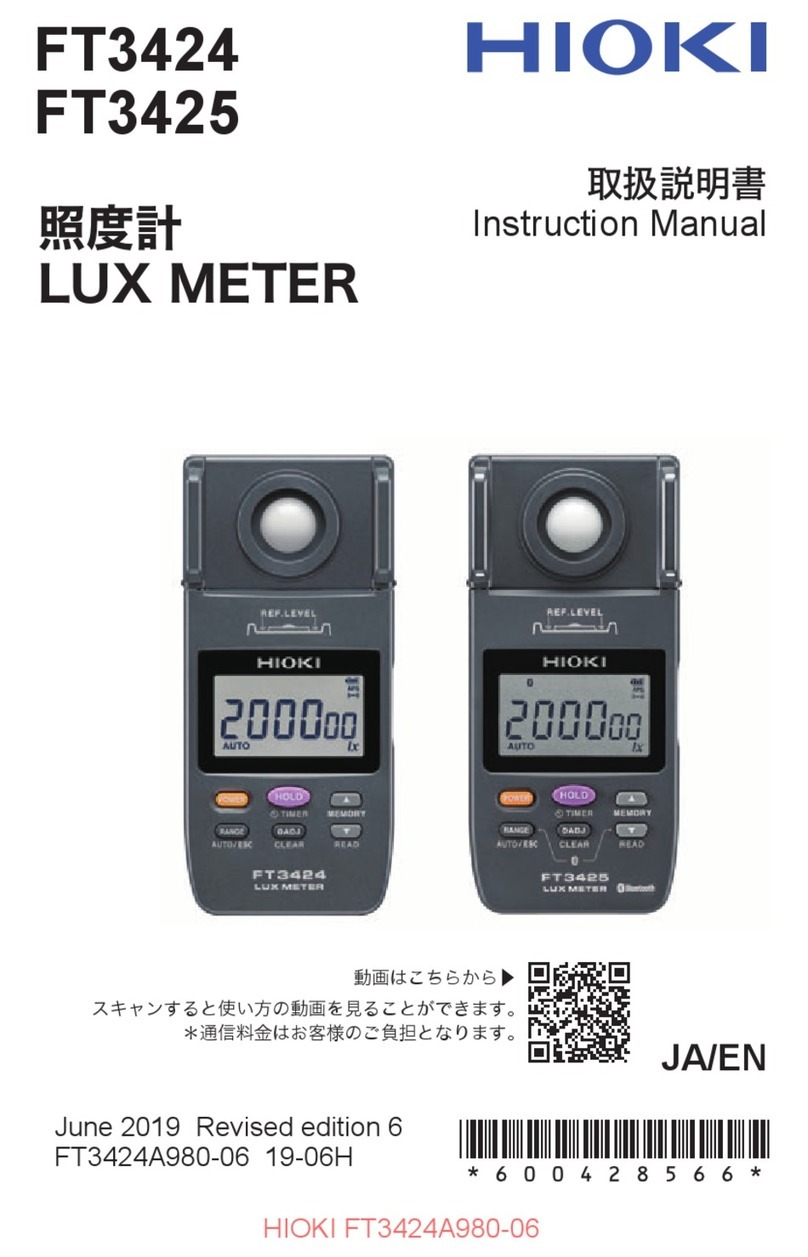
Hioki
Hioki FT3424 instruction manual

Ankom
Ankom Delta Operator's manual

